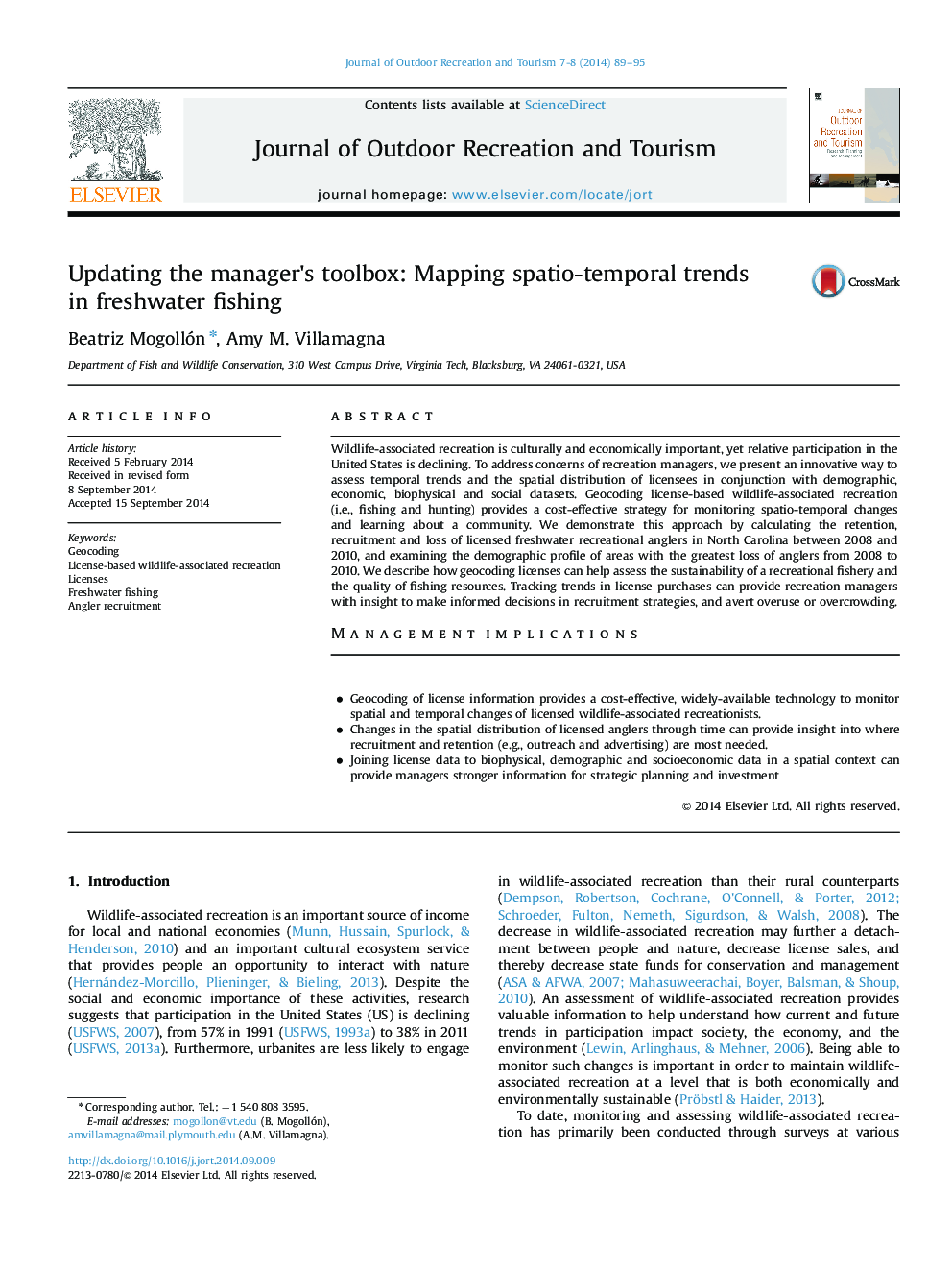| Article ID | Journal | Published Year | Pages | File Type |
|---|---|---|---|---|
| 92401 | Journal of Outdoor Recreation and Tourism | 2014 | 7 Pages |
Wildlife-associated recreation is culturally and economically important, yet relative participation in the United States is declining. To address concerns of recreation managers, we present an innovative way to assess temporal trends and the spatial distribution of licensees in conjunction with demographic, economic, biophysical and social datasets. Geocoding license-based wildlife-associated recreation (i.e., fishing and hunting) provides a cost-effective strategy for monitoring spatio-temporal changes and learning about a community. We demonstrate this approach by calculating the retention, recruitment and loss of licensed freshwater recreational anglers in North Carolina between 2008 and 2010, and examining the demographic profile of areas with the greatest loss of anglers from 2008 to 2010. We describe how geocoding licenses can help assess the sustainability of a recreational fishery and the quality of fishing resources. Tracking trends in license purchases can provide recreation managers with insight to make informed decisions in recruitment strategies, and avert overuse or overcrowding.Management implications•Geocoding of license information provides a cost-effective, widely-available technology to monitor spatial and temporal changes of licensed wildlife-associated recreationists.•Changes in the spatial distribution of licensed anglers through time can provide insight into where recruitment and retention (e.g., outreach and advertising) are most needed.•Joining license data to biophysical, demographic and socioeconomic data in a spatial context can provide managers stronger information for strategic planning and investment
